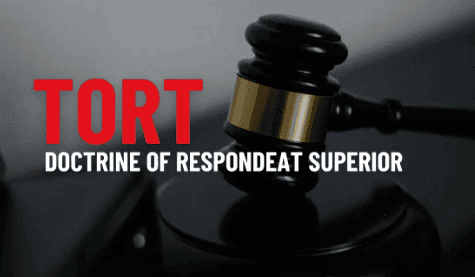The Indian Contract Act | Civil Law for Judiciary Exams PDF Download
| Table of contents |

|
| Doctrine of Good Faith and Fair Dealing |

|
| Doctrine of Subrogation |

|
| Doctrine of Respondeat Superior |

|
| Doctrine of Promissory Estoppel |

|
| Doctrine of Frustration |

|
| Doctrine of Restitution |

|
Doctrine of Good Faith and Fair Dealing
The doctrine of good faith and fair dealing is a cornerstone of contract law, mandating that parties conduct themselves honestly, fairly, and in a manner consistent with the intent and purpose of their agreement. It obligates contracting parties to adhere to the terms of their contract with integrity, reasonableness, and fidelity to its objectives.
This principle ensures fairness and equity in contractual relationships, fostering trust and cooperation between parties. It also aims to deter opportunistic or unfair conduct that undermines the benefits expected by either party from the contract.

Doctrine of Good Faith in India
The concept of "good faith" is recognized in various Indian statutes, but its definition varies.
- The General Clauses Act, 1897 defines good faith as an act done honestly, regardless of negligence, emphasizing honesty as its core element.
- In contrast, Section 52 of the Indian Penal Code, 1860 (IPC) states that an act performed without "due care and attention" cannot qualify as being in good faith, thereby linking good faith to the presence of reasonable diligence.
The term "due care and attention," however, is not clearly defined, creating ambiguity regarding the standard of care required for an act to be considered as done in good faith.
Under the Indian Contract Act, 1872 (ICA), good faith is not comprehensively defined but is mentioned in specific provisions:
- Section 223 requires an employer to indemnify an agent for actions performed in good faith, even if they cause injury to third parties.
- Section 178A allows a pawnee to acquire good title over goods pledged by a pawnor, provided the pawnee acts in good faith, even if the pawnor's possession was under a voidable contract.
The lack of a unified definition across statutes, coupled with contradictions between the General Clauses Act and IPC, contributes to confusion in the interpretation and application of good faith within Indian law.
Scope of Good Faith in Indian Contract Law
Although the ICA does not explicitly define good faith, its essence—honesty, fairness, and diligence—can be inferred from various provisions:
Judicial Interpretation:
- In Kailas Sizing Works v. Municipality of Bhivandi and Nizampur (1968), the court held that acting in good faith involves honesty, fairness, and the absence of willful negligence or intentional harm.
Duties of Agents:
- Section 212 of the ICA obligates agents to act diligently and with reasonable skill, implying good faith as a requirement.
- Agents must also maintain open communication with their principals, reflecting the expectation of fairness and honesty in their dealings.
Principle of Diligence and Honesty:
- The absence of good faith in contractual dealings implies misconduct or negligence, potentially leading to repudiation of the contract, as highlighted by the courts.
Insurance Contracts:
- Good faith is particularly relevant in insurance contracts, requiring parties to act without misrepresentation or concealment of material facts.
Judicial Emphasis on Intention:
- In Union of India v. D.N. Revri & Co. (1976), the court emphasized interpreting contracts sensibly to uphold the intended benefits for both parties.
- Similarly, in Swarnam Ramachandran v. Aravacode Chakungal Jayapalan (2004), the court underscored assessing the parties’ intent based on contract terms, subject matter, and surrounding circumstances.
Thus, while the ICA does not explicitly define good faith, it is implicitly recognized and enforced through judicial interpretation as a principle of honesty, fairness, and adherence to the intended spirit of contractual relationships.
Consequences of Violating Good Faith
Failing to act in good faith can have serious repercussions, including:
- Breach of Contract: Violating the duty of good faith constitutes a breach, making the defaulting party liable for damages or other legal remedies.
- Contract Termination: Egregious violations, such as dishonesty or willful misconduct, can justify contract termination.
- Denial of Specific Performance: Courts may deny equitable remedies to parties who have acted in bad faith, as equity requires clean hands.
- Invalidation of Transactions: Transactions carried out in bad faith may be rendered void or unenforceable.
- Punitive Damages: In cases of severe misconduct, courts may impose punitive damages to deter future violations.
- Estoppel: A party acting in bad faith may be barred from asserting certain rights or claims, preventing inconsistent positions.
- Loss of Contractual Remedies: Bad faith can preclude a party from enforcing specific contract provisions or seeking remedies.
- Reputational Damage: Bad faith actions can harm a party’s reputation, adversely affecting future business relationships.
Conclusion
- Although the Indian Contract Act, 1872 does not explicitly define the doctrine of good faith, the judiciary has interpreted it as an implicit requirement, emphasizing honesty, fairness, and diligence in contractual dealings. Good faith demands reasonable care, the avoidance of negligence, and adherence to the contract's intended purpose. While statutory ambiguity persists, Indian courts provide clarity by focusing on the intent of the parties and the broader objectives of the contract. Violations of this principle can lead to serious legal and reputational consequences, reinforcing its importance in fostering trust and equity in contractual relationships.
Doctrine of Subrogation
- The Doctrine of Subrogation allows one party to take over the rights of another party (usually a creditor) against a debtor.
- In India, this principle is outlined in Sections 140 and 141 of the Indian Contract Act, 1872.
- These sections explain the rights of a surety if the main debtor defaults on a payment.
- Subrogation is commonly seen in insurance and surety contracts.
- The term comes from Latin, meaning to "ask under" or replace one party with another in relation to a debt.
- In insurance, it allows the insurer to pursue claims against third parties after paying for a loss.

What is the Doctrine of Subrogation?
- Subrogation means that an insurer can step into the shoes of the insured to recover costs from those responsible for a loss.
- This right can arise from the situation itself or be included in a contract.
- In India, it’s governed by Sections 140 and 141 of the Indian Contract Act, which detail the rights of a surety.
- This principle is especially important in insurance claims.
Types of Subrogation
- Indemnity Insurance: The insurance company can sue the party at fault to recover what they paid for damages.
- Surety Rights: If a guarantor pays off a debt for someone else, they can seek reimbursement from the debtor.
- Trustee Rights: Trustees can reclaim losses from beneficiaries and may put a lien on the trust for protection.
- Lender Rights: If a lender pays off a borrower's debt, they can pursue the borrower for that amount.
- Financial Institutions: Banks that pay off a debt for a customer can pursue the rights of the original creditor against that customer.
Categories of Subrogation
- Equitable Assignment: This occurs when an insurer takes the position of the policyholder after settling their claim.
- Contractual Subrogation: This allows insurers to assume the rights of the insured to recover losses from third parties.
- Subrogation-Cum-Assignment: This allows insurers to keep any recovered sums and to sue on behalf of the policyholder.
Principles of Subrogation
- Substitution: Insurers can act on behalf of insured parties against third parties responsible for losses.
- Indemnity: The insured cannot profit from a claim; they can only recover their actual loss.
- No Prejudice: The insured's right to full compensation must not be harmed by subrogation actions.
- Waiver: Parties can agree to give up the right to subrogation, often seen in contracts like construction agreements.
- Arising After Payment: Subrogation rights only take effect after the insurer has compensated the insured.
- Equity and Good Faith: Insurers must act fairly and cannot gain more than what they paid out.
- Contractual Basis: Subrogation rights may be explicitly stated in the insurance contract.
- Legal and Equitable Rights: Insurers have both legal and fair claims to pursue third parties for losses.
Case Laws of Subrogation
- Aboobuucker v. Ayisha (1999): It was ruled that a guarantor can recover amounts from the principal debtor if the principal has mostly paid.
- New India Assurance Company Limited v. Genus Power Infrastructure Limited (2015): The court confirmed that a subrogation letter, signed without coercion, resolved the claim completely.
- Bank of Bihar Ltd v. Damodar Prasad (1969): The Supreme Court stated that if a principal debtor is insolvent, the surety must pay without requiring the creditor to pursue the debtor first.
Conclusion
- Understanding subrogation is vital for ensuring fair compensation and managing risks, especially in complex cases. Proper handling of claims and settlements is essential to comply with legal standards, and the rights of sureties must be preserved to claim their full amounts.
Doctrine of Respondeat Superior
Respondeat superior is a Latin term meaning "let the master answer." It is also known as vicarious liability. This legal principle originated in the United States and holds that an employer can be held accountable for the negligence or wrongdoing of their employees or agents.

What is the Doctrine of Respondeat Superior?
- This doctrine applies in certain tort cases, allowing an employer to be liable for actions performed on their behalf by employees or agents.
- Employers are responsible for their employees' negligent actions that occur during their employment.
- The doctrine is based on public policy, aimed at allocating business risks associated with operations.
- Examples:
- A delivery company is liable for a driver's negligence while making deliveries.
- A property owner is liable for a property manager's negligence if it leads to a tenant's injury due to poor maintenance.
Requirements of the Doctrine of Respondeat Superior
- There must be a master-servant or employer-employee relationship.
- The employee's tortious act must occur within the scope of their employment.
- The employee must act within their duties or for the employer's benefit at the time of the wrongful act.
What is Course of Employment?
- A worker's employment starts when they reach their workplace and typically ends when they leave.
- Generally, travel to and from work is not considered part of employment, but there can be exceptions for reasonable extensions of time and place.
- Injuries must arise both out of and in the course of employment to be compensable.
Meaning of "In the Course of Employment":
- This phrase refers to activities that employees are hired to do and are related to their work.
- There must be a causal relationship between the accident and the employment.
Exceptions to Respondeat Superior:
- This doctrine does not apply to independent contractors.
- If an employee is no longer acting on behalf of the employer while on the job, the employer may not be held liable.
Case Laws on the Doctrine of Respondeat Superior
- Smt. Savita Garg v. The Director, National Heart Institute (2004): The Supreme Court ruled that a hospital is responsible for a doctor's actions unless it can prove there was no negligence or recklessness.
- Automobiles Transport v. Dewalal (1976): It was established that a vehicle is assumed to be driven under the master’s instructions. The transport company was held liable for its employee’s actions during employment, reinforcing respondeat superior.
Doctrine of Promissory Estoppel
The doctrine of promissory estoppel is an equitable principle developed to prevent injustice. It applies when one party, through clear and unequivocal words or conduct, makes a promise intended to create or affect legal relations, knowing it will be relied upon by the other party. If the promisee acts upon this promise to their detriment, the promisor is bound and cannot retract. Originating from courts of equity in England, estoppel is considered a rule of equity, while in India, it is primarily a rule of evidence. In India, this doctrine applies equally to private individuals and the government. The Law Commission of India, in its 108th Report (1984), proposed the inclusion of Section 25A in the Indian Contract Act, 1872, to address promissory estoppel.

Key Elements of Promissory Estoppel
Representation or Promise:
- A promise or representation is made between two parties concerning future actions.
- The promise is intended to influence the legal relationship of the parties.
Action in Reliance:
- The other party acts in reliance on the promise or refrains from doing something they otherwise would have done.
- The reliance must result in a disadvantage or prejudice to the promisee.
Evolution of Promissory Estoppel
India:
The doctrine was first applied in the 1880 Calcutta High Court case Ganges Mfg. Co. v. Soorujmull. The court held that a promise, even without consideration, could be enforced if acted upon.England:
The doctrine was introduced by the House of Lords in Thomas Hughes v. Metropolitan Railway Co. (1877). It was later recognized in Central London Properties Ltd. v. High Trees House Ltd. (1947), where Lord Denning established that a promise, if intended and acted upon, is binding.
Promissory estoppel has since evolved and is widely accepted in legal systems worldwide, including India and England.
Legal Provisions Related to Promissory Estoppel
Under the Indian Contract Act, 1872:
- Section 25: Addresses contracts made without consideration, which overlaps with aspects of promissory estoppel.
- Proposed Section 25A: Suggested by the Law Commission to formally recognize promissory estoppel in Indian law.
Under Other Indian Laws:
Section 115 of the Indian Evidence Act, 1872:
- Establishes the principle of estoppel for representations about existing facts.
- Promissory estoppel, however, deals with future promises and is not covered by Section 115.
Article 299 of the Constitution of India:
- Protects government officials from personal liability for promises made under official capacity.
- Application of promissory estoppel must align with constitutional provisions.
Landmark Cases
Motilal Padampat Sugar Mills Co. Ltd. v. State of U.P. (1979):
- Recognized promissory estoppel against the government.
- Expanded the doctrine to create actionable rights based on promises.
Union of India v. Indo-Afghan Agencies Ltd. (1968):
- The government was held accountable for its promises.
- Rejected the defense of executive necessity.
Delhi Cloth & General Mills Ltd. v. Union of India (1987):
- Established that the promisee must have altered their position based on the promise.
Pournami Oil Mills v. State of Kerala (1987):
- The government was barred from reneging on promises of tax exemptions, which had been relied upon by industries.
Limitations of Promissory Estoppel
Pre-existing Legal Relationship:
- It applies only when an existing legal relationship is altered or varied.
- A new contract must be supported by consideration.
Reliance and Alteration of Position:
- The promisee must show that they relied on the promise and changed their position to their detriment.
Equity:
- The doctrine is grounded in equity and applies only when it would be unjust for the promisor to retract the promise.
Defensive Nature:
- Promissory estoppel can be used only as a shield, not as a sword. It cannot create a cause of action but only serves as a defense.
Suspensory Effect:
- It suspends obligations but does not extinguish them under the original contract.
Minors and Promissory Estoppel
Minors cannot be held liable under promissory estoppel due to the statutory protection they enjoy under contract law. The doctrine cannot override the legal principle that protects minors from contractual liabilities.
Conclusion
- Promissory estoppel ensures fairness by preventing a promisor from reneging on promises that have been relied upon to the promisee's detriment. In India, it holds both individuals and government entities accountable, even in the absence of consideration. By promoting equity and justice, the doctrine prevents promissory retraction, ensuring that promises, whether implied or explicit, are legally upheld.
Doctrine of Frustration
- The Doctrine of Frustration is found in Section 56 of the Indian Contract Act, 1872 (ICA).
- This doctrine states that a contract can become void if an unexpected event occurs after the contract is made, making it impossible to perform, illegal, or drastically different from what was originally intended.
- This is important for understanding what happens legally when unforeseen events disrupt contractual obligations.
- The idea of force majeure is related to this doctrine, although it is not specifically defined in the ICA.

Key Elements of the Doctrine of Frustration
- Unforeseen Events: Frustration occurs when unexpected events make it impossible to fulfill contractual obligations. These events are usually not considered by the parties when they make the contract.
- Radical Change in Circumstances: The event must cause a significant change in the situation, making the performance of the contract very different from what was initially planned.
- No Fault of Either Party: Frustration is not due to the negligence or fault of either party; it arises from external and unforeseen events.
- Impossibility of Performance: The event must make the performance of the contract impossible, illegal, or very different from what was originally agreed upon.
Force Majeure and its Relation to the Doctrine of Frustration
- Force majeure clauses in contracts list specific events (like natural disasters or government actions) that can excuse parties from performance under certain conditions.
- While these clauses require listed events, the doctrine of frustration applies to unforeseen events not mentioned in the contract.
- Indian courts recognize force majeure as a valid reason for frustration, especially when contracts do not cover unexpected events.
Landmark Cases Illustrating the Doctrine of Frustration
- Satyabrata Ghose v. Mugneeram Bangur & Co. (1954): This case established that for frustration to happen, the event must fundamentally change the nature of the contract, making it impossible to perform. The court clarified that mere inconvenience or financial loss does not constitute frustration.
- Taylor v. Caldwell (1863): Although a British case, its principles have influenced Indian law. It ruled that contracts can be frustrated if the subject matter essential for performance is destroyed or unavailable due to unforeseen events.
- Murlidhar Chiranjilal v. Harishchandra Dwarkadas & Ors. (1962): The Supreme Court of India reinforced that frustration requires a significant change in circumstances. The court held that if the government requisitions property during wartime, making a contract for its sale impossible, frustration applies.
Conclusion
- The Doctrine of Frustration under the ICA protects parties from unforeseen events that disrupt their contractual obligations. It allows for the termination of contracts when performance becomes impossible, illegal, or significantly different from what was originally agreed upon.
Doctrine of Restitution
- The Doctrine of Restitution in the Indian Contract Act, 1872, is about restoring benefits received under a contract that is later deemed void or unenforceable.
- While the concept is important, it is not directly stated in the Act.
- Restitution goes beyond just compensation; it aims to prevent one party from being unfairly enriched at the expense of another when a contract fails.

Which Provision Covers the Doctrine of Restitution?
- Section 65 deals with situations where a contract is found to be void.
- If someone has received an advantage from a void agreement, they must return it or compensate the other party.
Application of the Doctrine of Restitution
- Void Contracts: When a contract is void, both parties must return any benefits received to avoid unfair advantage.
- Failure of Consideration: If one party benefits without fulfilling their part of the deal, they must return those benefits.
- Mistake, Coercion, or Fraud: If a contract is voidable due to these issues, the innocent party can seek restitution to return to their original position.
- Quasi-Contracts: This applies in situations without a formal contract but where there is still a legal obligation to return benefits, like in cases of unjust enrichment.
Exceptions to the Doctrine of Restitution
- When both parties know the agreement is void.
- If the parties involved lack the capacity to contract.
- When a party fails to meet a required obligation, such as providing earnest money.
Landmark Judgments Related to the Doctrine of Restitution
- Mohori Bibee v. Dharmodas Ghose (1903): This case underscored the need for restitution when contracts involve minors, emphasizing the importance of restoring parties to their original positions when agreements are void from the start.
- Sadasiva Panda v. Prajapati Panda (2017): In this case, the defendant sold property to someone else after accepting an advance payment. The court ruled that the plaintiff was entitled to get back the advance payment under Section 65, as the defendant’s actions were wrongful.
|
363 docs|256 tests
|




















